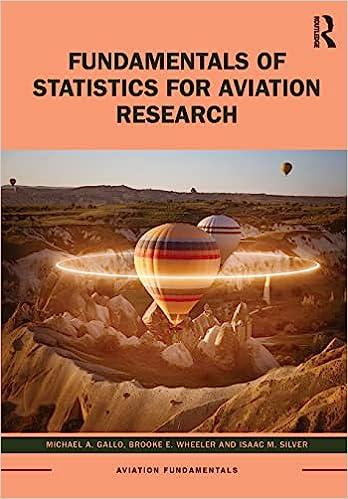8. In the airline industry, a measure of passenger carrying capacity is available seat kilometers (ASK), which
Question:
8. In the airline industry, a measure of passenger carrying capacity is available seat kilometers (ASK), which is equal to "seats available x distance flown." For ex- ample, an aircraft with 100 seats that flies 250 km generates 25,000 ASKS for that flight. Let's assume that a revenue analyst for a low-cost carrier needs to estimate the mean ASK for one of the carrier's aircraft flown on a particular day and ran- domly selects 11 flights for that day involving this aircraft. Let's further assume that the ASK distribution in the population is unknown but is believed to be approxi- mately normal in shape, but there is no historical data about its variability. Which of the following is the primary reason the revenue analyst should use a t confidence interval rather than a z confidence interval when estimating the targeted day's mean ASK?
a. She is estimating using M.
b. She is using SD as an estimate of .
c. She is using data from only one specific day.
d. The z confidence interval should never be used with a small sample
Step by Step Answer:

Fundamentals Of Statistics For Aviation Research
ISBN: 9781032311463
1st Edition
Authors: Michael A. Gallo, Brooke E. Wheeler, Isaac M. Silver






